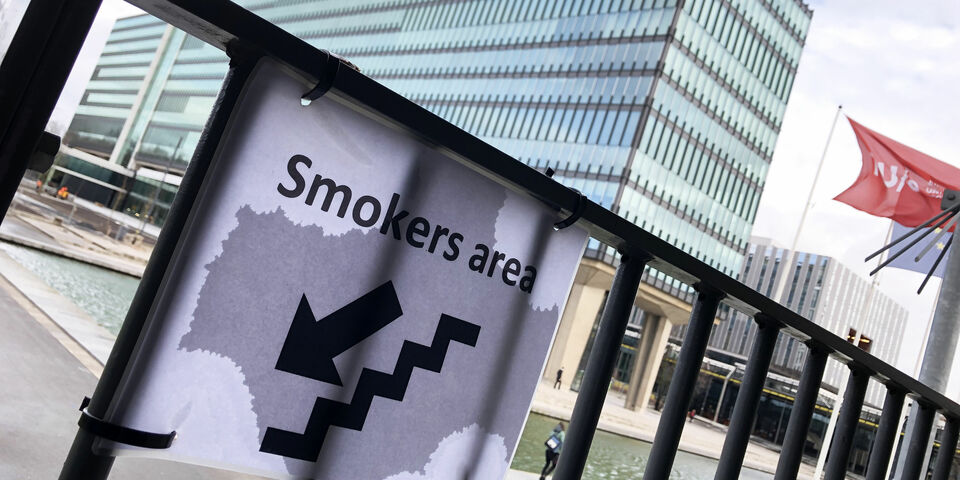Much remains unclear about smoking ban on campus
By January 2020, the TU/e campus has to be a smoke-free area, just like all other school areas and, consequently, institutes of higher education in the Netherlands. But how far should TU/e go, will there be any place left for smokers, and do different rules apply to residential buildings on campus? There is still a lot to figure out for the TU/e project members who are working on this.
A completely smoke-free campus doesn’t seem feasible. Unlike schoolyards, campuses are “like ‘company premises’ with different ownership and ground positions,” says Floor van der Heijden, manager Safety, Health, Environment and Radiation at Tu/e, as she quotes from recent information given to her by the national legal consultation between universities. ‘Her’ organization plays a key role in the project team that devises the policy regarding the smoke ban. The lawyers of the national consultation speak of a complex situation. The starting point will probably be that universities are going to designate smoke-free zones, says Van der Heijden. TU/e already has several such zones.
Van der Heijden explains that one complicating factor are the residential towers on our campus. “The Civil Code applies to these towers, so do we have anything to say about it? And how do you deal with events that take place in the weekends? What about the business companies on campus, and where does the ban end exactly? Does is end at the Dommel, or does it extend from one traffic gate banner to the other?” The manager hopes to get clarification on these matters in the near future. More light will be thrown on the matter once the governmental decree is made public.
Van der Heijden says that in the future, the same rules will not apply to all universities and institutes of higher education. “We already consult on a national level with other universities, but the situations differ quite a lot. Take the University of Utrecht for example, which has many buildings spread across town. That’s a completely different situation from ours, where all buildings are concentrated on one site.”
Stewards
For this reason, TU/e has drafted its own plan and decided to do its own research. The project team adopts various approaches at the same time, says Van der Heijden. “We are part of the national consultation, and we try to figure things out ourselves. For instance, we’ve talked to the Department of Internal Affairs about the possibility of working with stewards to enforce the ban, and with staff from the Communication Expertise Center about how to communicate the ban to people.”
The TU/e manager makes it clear that our university strives for a “smoke-free generation. It’s not our intention to punish smokers, but to support them, for instance by facilitating a course on how to quit smoking.”
Smoking is not allowed in TU/e buildings since 2004. Every employee has the right to a smoke-free workplace. There are several areas on campus where smoking is and isn’t allowed.
In anticipation of this, TU/e’s Student Sports Center has imposed its own smoking ban. A separate smoking zone has been created as well. Raymond Starke, Communications staff member, explains: “It was our own initiative, but it did result from Tu/e’s plans to turn the campus into a smoke-free area. Vitality and health, which are important issues to us as a sports center, don’t mix with smoking. It’s a smaller step for us and easier to justify, and it reflects the current thinking on smoking as well. We still want to give people the opportunity to smoke. For this purpose, we have created a smoking area on the edge of the terrace. We give visitors time to adjust and we friendly remind them of the new situation when necessary. So far, most people have been understanding.”
The departmental board of the Department of Architecture, Building and Planning also decided to make the entrance of Vertigo ‘smoke free.’ The ashbin has been relocated to the bottom of the stairs around the corner.






Discussion